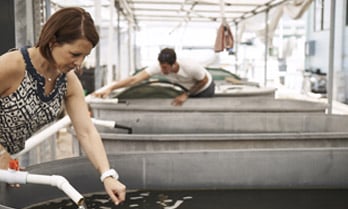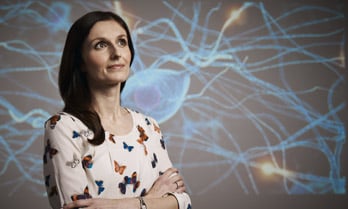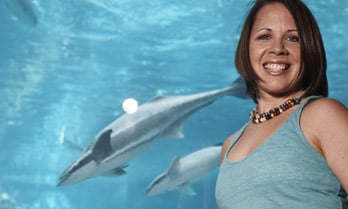Dr Ilana Feain, Australia Telescope National Facility, CSIRO
01 September 2011
School girls join study to understand black holes and the birth of stars
Black holes are some of the most bizarre objects in the universe. They can have as much mass as a billion stars combined. How did they form and how did they get so big?
This is one of the biggest questions facing astronomers in the 21st Century. Ilana Feain used her L’Oréal For Women In Science Fellowship to support her in her quest for an answer to this question.
Qualifications
2006 PhD (Astrophysics) The University of Sydney
2002 Bachelor of Advanced Science with Honours Class I (Physics) The University of Sydney
1996 Higher School Certificate The Emanuel School
Career highlights
2006- Bolton Post-Doctoral Fellow, CSIRO Australia Telescope National Facility, Australia
2003-2006 Laboratory assistant, School of Physics, The University of Sydney, Australia
2000-2001 Research assistant, CSIRO, Australia Telescope National Facility, Australia
1999-2000 Research assistant, School of Physics, The University of Sydney, Australia Honours, grants and awards
2003-2006 CSIRO Postgraduate Student Research Scholarship
2003-2006 Denison PhD Award, School of Physics, The University of Sydney
2003-2006 Australian Postgraduate Award Scholarship
2002 Denison Merit Award, School of Physics, The University of Sydney
2002 The University of Sydney Medal
2000 Cadbury-Julius Sumner Miller Scholarship No. 3 for Senior Physics, The University of Sydney
2000 The Walter Burfitt Scholarship No. 2 for Senior Physics, The University of Sydney
Teaching and public outreach
2007 Australian scientist, Global Jet Watch
2007 Invited talk, Astrophysics for Physics Teacher’s Workshop
2007 Invited talk, Sydney Girls High School Astronomy Club
2006 Teacher, Topics in Modern Astronomy, Continuing Education Series
2006 Teacher, NSW hSC Cosmology Distinction Course
2006 Teaching Associate ‘Wildflowers in the Sky’ outreach campaign: Taking astronomy to remote schools in Western Australia




